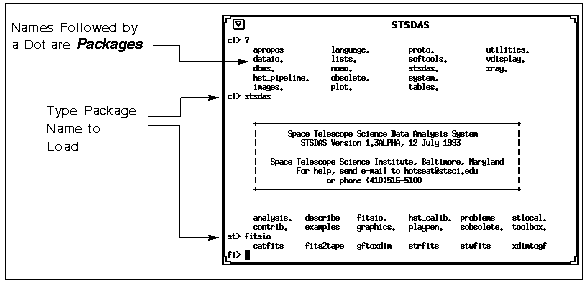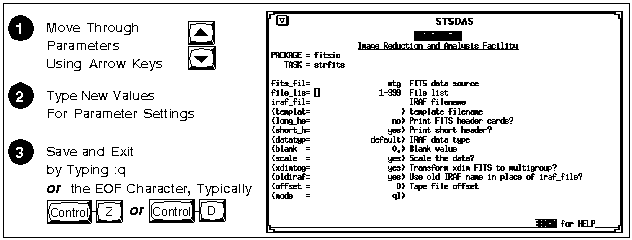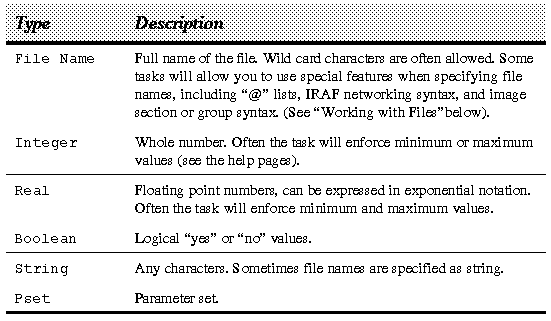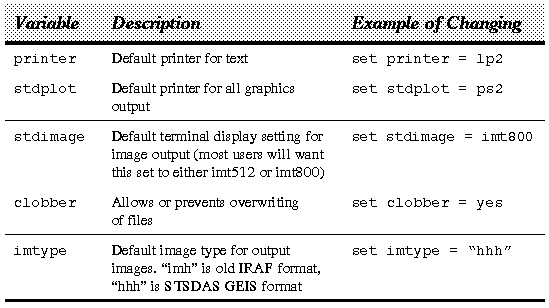Loading Packages
In IRAF terminology, a command or program is called a task and logically-related tasks are grouped together in a package. Before you can use a task, its package must be loaded.
- Load a package by typing its name.
- When you load a package, the prompt changes to the first two letters of the newly-loaded package.
- As the package loads, a list of newly-available tasks and subpackages is displayed.
- As the package loads, a list of newly-available tasks and subpackages is displayed.
Loading Packages
Some commands that will help you manage packages are:
- ? - List tasks in the current package.
- ?? - List all tasks loaded, regardless of package.
- package - List names of all loaded packages.
- bye - Exit the current package.
- ?? - List all tasks loaded, regardless of package.
 Note that many packages, including TABLES and its packages, are implicitly loaded when the STSDAS package is loaded. See the diagram on page 25.
Note that many packages, including TABLES and its packages, are implicitly loaded when the STSDAS package is loaded. See the diagram on page 25.







 . Parameter types are listed in Table
. Parameter types are listed in Table 
